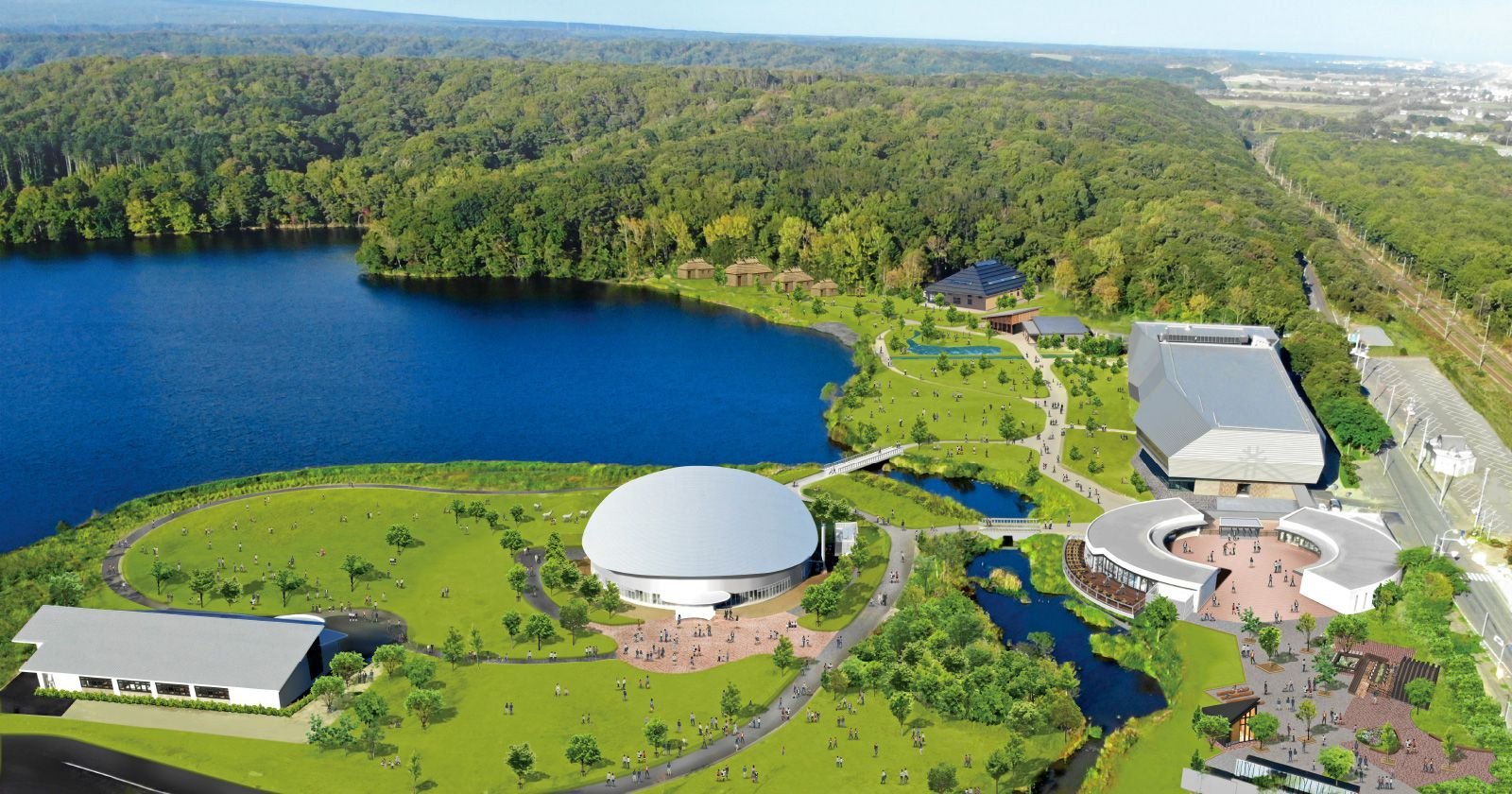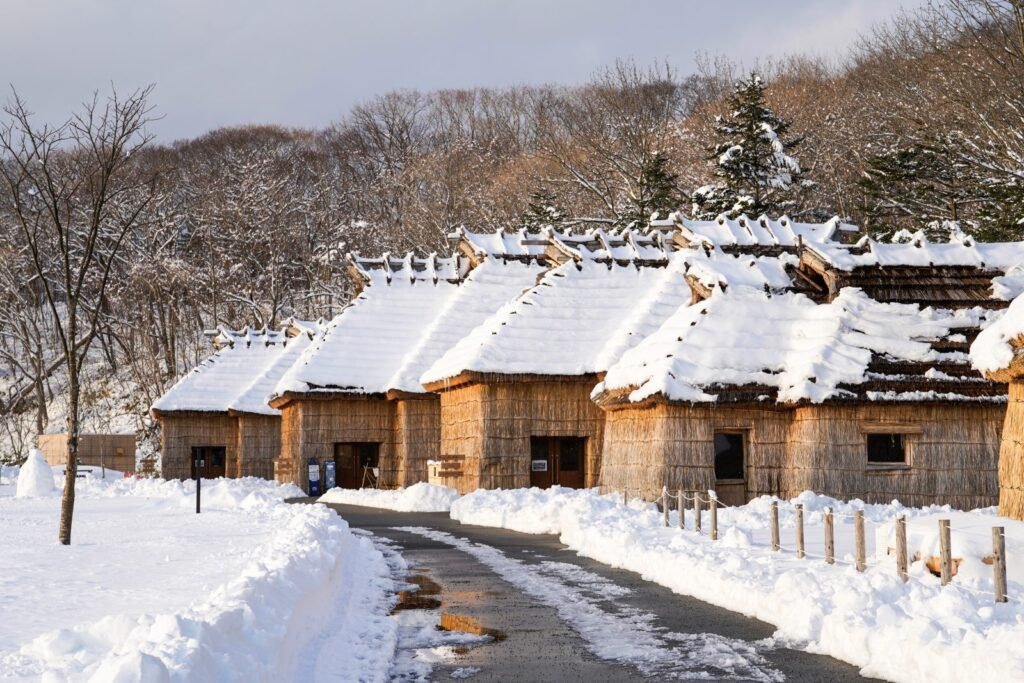
Upopoy: The Best Place to Experience Ainu Culture
- by Nathan
- Posted on March 1, 2025
Japan is a country rich in cultural diversity, and one of its most fascinating yet lesser-known cultures is that of the Ainu, the indigenous people of Hokkaido. For travelers seeking to learn about and experience Ainu traditions, history, and way of life, Upopoy (National Ainu Museum and Park) is the ultimate destination. Located in Shiraoi, Hokkaido, Upopoy is a cultural center dedicated to preserving and promoting Ainu heritage. Here’s your guide to exploring Upopoy and immersing yourself in the vibrant world of the Ainu people.
What is Upopoy?
- Meaning: The word Upopoy means “singing together in a large group” in the Ainu language, symbolizing unity and cultural exchange.
- Purpose: Upopoy serves as a hub for learning about Ainu history, traditions, and contemporary life.
- Facilities: The complex includes the National Ainu Museum, an outdoor Cultural Exchange Center, and a Memorial Site honoring Ainu ancestors.
Why Visit Upopoy?
- Cultural Immersion: Upopoy offers a unique opportunity to connect with Ainu culture through exhibits, performances, and hands-on activities.
- Educational Experience: Learn about the Ainu people’s history, language, and traditions in an engaging and respectful way.
- Scenic Location: Set on the shores of Lake Poroto, Upopoy’s surroundings are as beautiful as they are culturally significant.
- Sustainable Tourism: Upopoy promotes the preservation and revitalization of Ainu culture, making it a meaningful destination for responsible travelers.
Top Experiences at Upopoy
1. Explore the National Ainu Museum
- Why Visit: The museum is the centerpiece of Upopoy, offering a comprehensive overview of Ainu culture.
- What to See:
- Exhibits on Ainu history, spirituality, and daily life.
- Artifacts like traditional clothing, tools, and handicrafts.
- Interactive displays and multimedia presentations.
- Tip: Don’t miss the museum’s temporary exhibitions, which often feature contemporary Ainu artists and themes.
Watch Traditional Ainu Performances
- Why Visit: Ainu dance and music are integral parts of their cultural heritage.
- What to Experience:
- Mukkuri (Jaw Harp) Performances: A traditional Ainu musical instrument.
- Rimse (Ainu Dance): A group dance that tells stories and expresses gratitude to nature.
- Storytelling: Listen to Ainu folktales and legends.
- Tip: Check the performance schedule in advance to plan your visit.
Participate in Hands-On Workshops
- Why Visit: These workshops allow you to engage directly with Ainu culture.
- What to Try:
- Wood Carving: Learn to create traditional Ainu patterns and designs.
- Embroidery: Try your hand at Ainu textile art.
- Cooking: Prepare and taste traditional Ainu dishes like ohaw (soup) or sito (dumplings).
- Tip: Book workshops in advance, as they can fill up quickly.
Stroll Through the Cultural Exchange Center
- Why Visit: This outdoor area features reconstructed Ainu houses (chise) and a replica of a traditional Ainu village.
- What to Do:
- Explore the chise and learn about Ainu architecture and daily life.
- Walk along the nature trails and enjoy the serene surroundings.
- Visit the Memorial Site to pay respects to Ainu ancestors.
- Tip: Bring comfortable shoes and a camera to capture the beautiful scenery.
Shop for Authentic Ainu Crafts
- Why Visit: The museum shop offers a range of handmade Ainu crafts and souvenirs.
- What to Buy:
- Wooden Carvings: Intricately carved items like trays and jewelry.
- Textiles: Embroidered clothing and accessories.
- Books and Music: Learn more about Ainu culture through literature and recordings.
- Tip: Purchasing these items supports local Ainu artisans and their communities.
Practical Information for Visiting Upopoy
- Location: Shiraoi, Hokkaido, Japan (about an hour by train from Sapporo).
- Hours: 9:00 AM to 6:00 PM (last entry at 5:30 PM). Closed on Mondays (or the following day if Monday is a holiday).
- Admission:
- Adults: ¥1,200
- High School Students: ¥600
- Children (Elementary and Junior High): Free
- Accessibility: The facility is wheelchair accessible, with ramps and elevators available.
- Language Support: English signage and audio guides are available.

Tips for Your Visit
- Plan Ahead: Check the official website for updates on events, performances, and workshops.
- Dress Comfortably: Wear layers, as Hokkaido’s weather can be unpredictable.
- Respect the Culture: Be mindful of cultural sensitivities, especially when taking photos or participating in activities.
- Combine with Other Attractions: Visit nearby Shiraoi attractions like Shiraoi Salmon Park or Poroto Lake.
Why Upopoy is Worth Your Time
Upopoy is more than just a museum—it’s a living, breathing celebration of Ainu culture. By visiting, you’re not only learning about the Ainu people but also supporting their efforts to preserve and share their heritage with the world. Whether you’re watching a traditional dance, trying your hand at wood carving, or simply soaking in the beauty of Lake Poroto, Upopoy offers a deeply enriching and unforgettable experience.
Conclusion
Upopoy is a must-visit destination for anyone interested in Japan’s indigenous culture. Through its exhibits, performances, and workshops, it provides a rare and meaningful opportunity to connect with the Ainu people and their traditions. So, add Upopoy to your Hokkaido itinerary and embark on a journey of cultural discovery that will leave you inspired and enlightened.
Nestled amidst the pristine landscapes of Shiraoi, Upopoy beckons as a sanctuary to embrace the captivating heritage of the Ainu people. Immerse yourself in their rich traditions and ancient customs through interactive exhibits, captivating storytelling, and authentic performances.
From intricate textiles and mesmerizing dances to the allure of traditional crafts, Upopoy weaves a vibrant tapestry of Ainu culture. As you explore the sprawling complex, uncover the secrets of their sacred rituals, their profound respect for nature, and their indomitable spirit.
